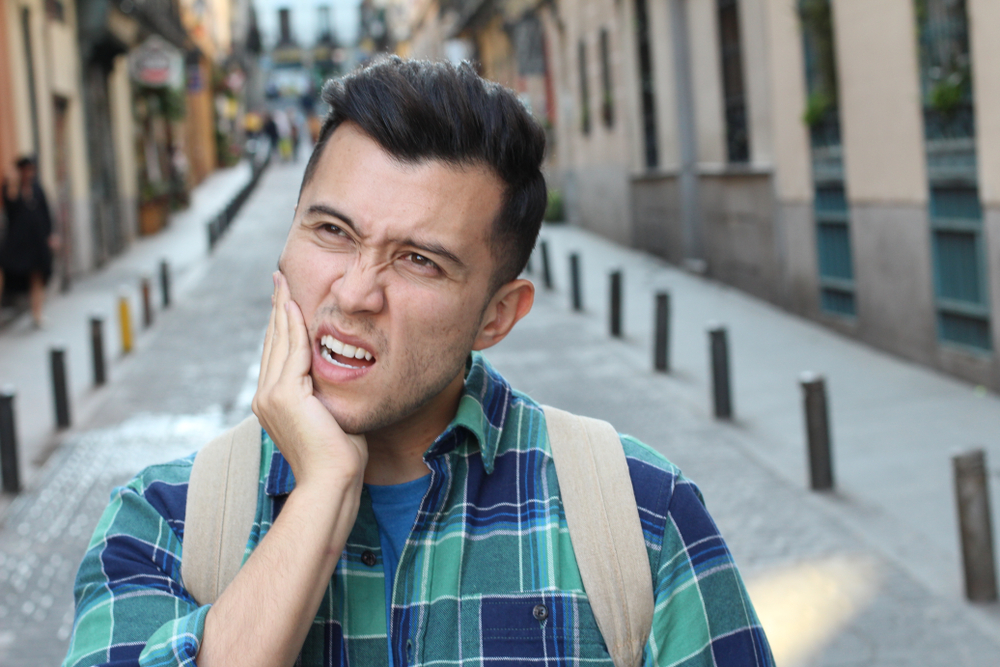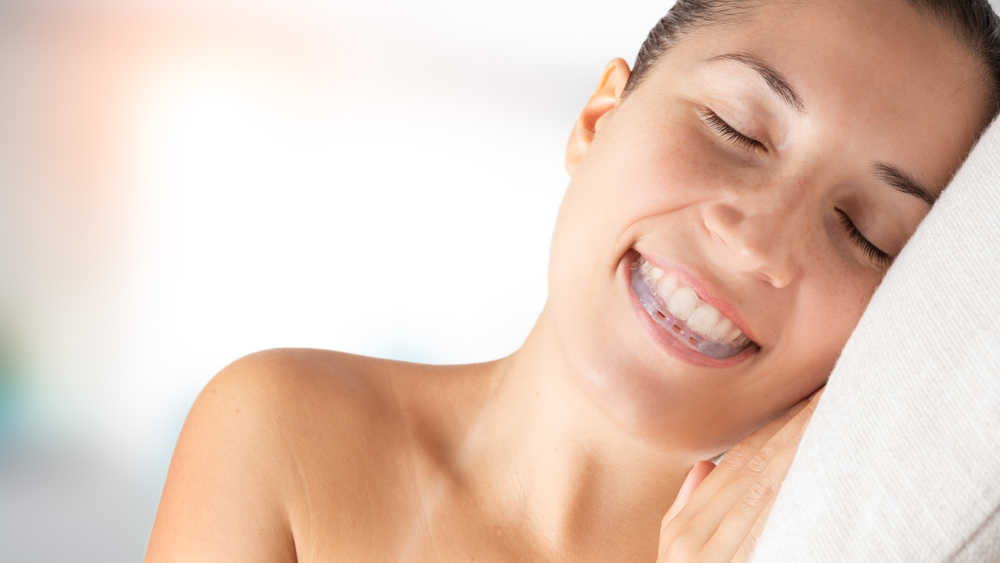
Teeth grinding and clenching, technically called bruxism, is a common issue. Some people find themselves clenching their jaw or grinding their teeth during the day when they’re under stress. However, for others, bruxism happens during sleep when they’re not conscious of the habit.
Chronic bruxism, particularly sleep bruxism, can lead to a number of complications, including chipped, cracked or worn teeth, damaged dental restorations, headaches, and facial and temporomandibular joint (TMJ) pain. But can teeth grinding change your face shape or make you age faster? The experts at Naperville Dental Specialists have answers.
Can Teeth Grinding Change Your Face Shape?
It might come as a surprise, but teeth grinding and jaw clenching can change your face shape. What’s the link between bruxism and your jawline? Well, clenching and grinding work the chewing muscles, including the masseter muscle, which connects to the cheekbone and the lower jaw, and the temporalis muscle, along the side of the head.
Due to the overuse from bruxism, the masseter and temporalis muscles get stronger and more pronounced, just like any other muscle in the body does in response to exercise. This enlargement, called hypertrophy, can lead to a square jaw that looks undefined and stereotypically “masculine.”
Aside from a squared jawline, bruxism can also change your face shape by giving it a swollen appearance and adding bulk to the cheek area.
Can Bruxism Make You Look Older?
Unfortunately, yes. According to a review published in the Journal of Clinical and Aesthetic Dermatology, the repetitive facial expressions that occur when grinding the teeth or clenching the jaw are a culprit behind premature aging of the lower face.
Teeth grinding makes teeth shorter as enamel erodes, which also contributes to changes in your facial appearance. In extreme cases, the constant biting force and, sometimes, even resulting tooth loss, cause jawbone loss and, in turn, facial sagging as the lower third of the face loses support and volume.
Can Changes to Your Facial Appearance from Bruxism be Reversed?
To some extent, they can. Getting treatment for teeth grinding and clenching will prevent bruxism from causing further changes to your face shape and reduce the appearance of overworked chewing muscles. For stress-related clenching and grinding, managing stress will go a long way in keeping the habit under control.
If you grind your teeth in your sleep, stopping can be harder. In order to treat sleep bruxism and reverse changes in face shape, you may need:
-
A custom night guard
A night guard is similar to an athletic mouthguard, but it cushions against the grinding forces and also helps to relax the facial muscles. A Naperville dentist can create a custom guard that will keep your teeth safe from wear and, as you contract your masseter muscle less frequently, cause it to shrink.
-
BOTOX® in the masseter muscle
Masseter muscle Botox has increased in popularity. Botox temporarily blocks the nerves from signaling the muscle to contract. Eventually, the masseter muscle atrophies and the face slims down. However, you’ll need to have regular Botox injections to maintain the results, which can be pricey.
-
TMJ disorder treatment
Often, bruxism and TMJ disorders go hand in hand. One of the treatments for TMJ disorder we offer at Naperville Dental Specialists is tmj NextGeneration™. The FDA-cleared, custom ear inserts sit comfortably and virtually invisibly in your ear canals. The devices support the TMJs, reducing pain and encouraging healing. They also alleviate strain on the chewing muscles and provide cognitive awareness of clenching and grinding, helping to stop bruxism. As teeth grinding and jaw clenching decreases and the muscles relax, the jaw will look less square.
-
Cosmetic dentistry
If face shape changes from jaw clenching and teeth grinding are due to worn enamel, one of our skilled Naperville cosmetic dentists can restore the shape, length and appearance of your teeth with treatments like dental veneers or cosmetic dental crowns. This will make you look years younger.
-
Orthodontic treatment
A misaligned bite can actually make you more susceptible to bruxism. In these cases, getting braces or Invisalign to straighten your teeth and improve your bite will be beneficial for stopping grinding and bringing your facial features into harmony. If you do need orthodontic treatment, as part of the Innovative Dental Partners family, we’re under the same roof as the talented, world-class orthodontists at Innovative Orthodontic Centers. We can refer you to the practice and easily coordinate your care.
-
Dental implants
Lastly, facial sagging because of bruxism-related tooth and bone loss can be remedied with dental implants and, if needed, a bone graft. Our leading American board-certified prosthodontist, Dr. Anthony LaVacca, offers a wide range of dental implants in Naperville, IL. He will assess your teeth, jaw and facial structure and recommend the best type of implants for your needs. The dental implants will support your lower face, lifting it and adding youthful volume.
Worried About a Change in Face Shape From Jaw Clenching or Teeth Grinding?
If you’re concerned about premature aging or changes to your face shape and jawline from bruxism, schedule a visit at Naperville Dental Specialists. With a team of general dentists and specialists in one practice, we can diagnose and treat bruxism in order to help you find relief and reclaim your appearance.

































